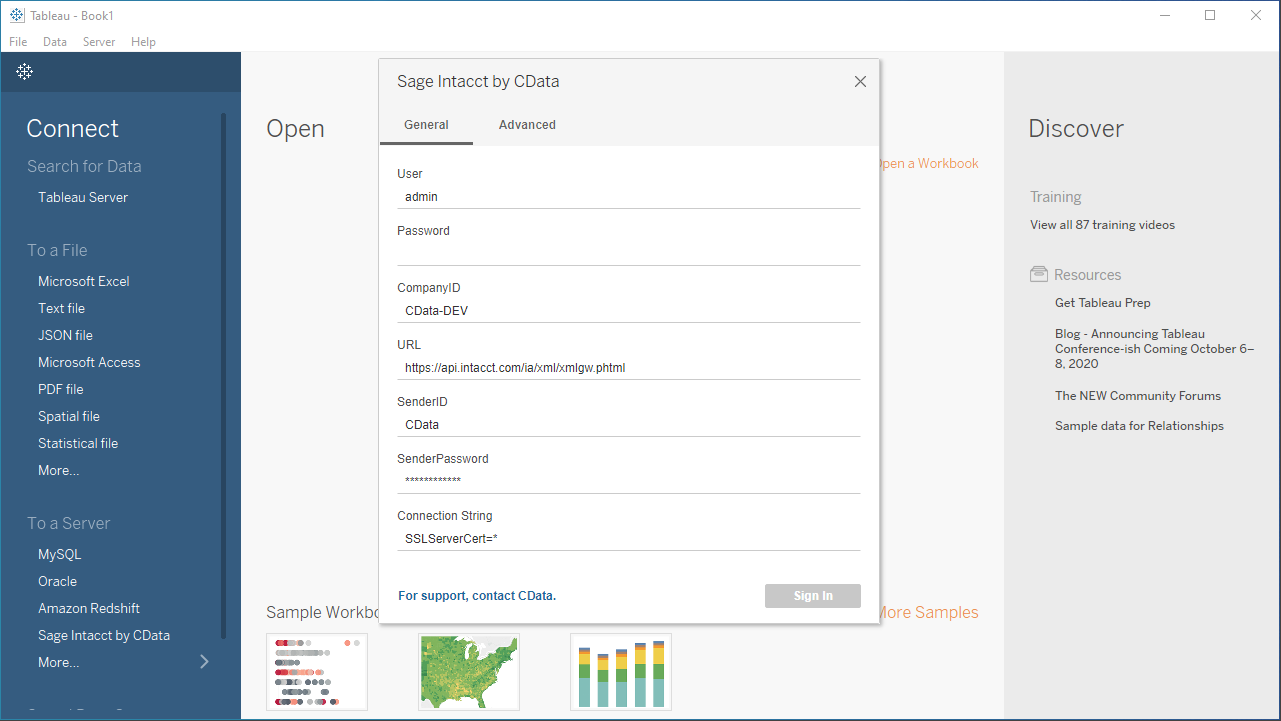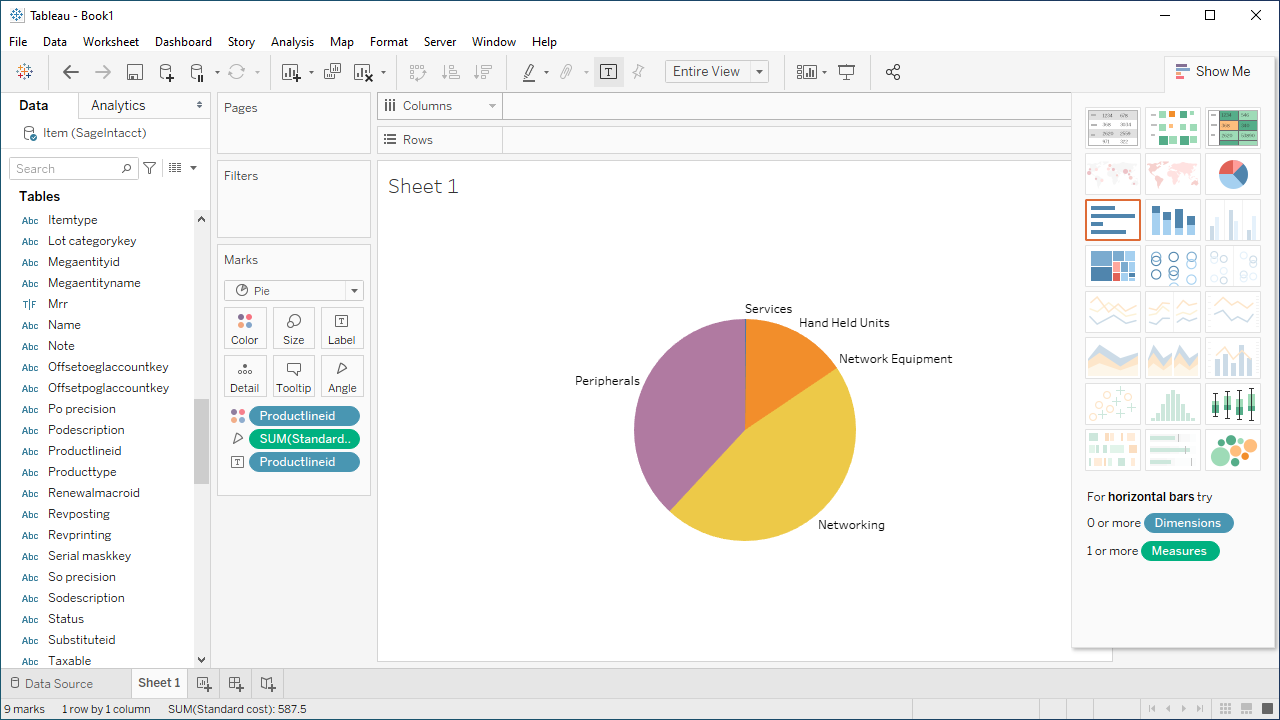Discover how a bimodal integration strategy can address the major data management challenges facing your organization today.
Get the Report →Visualize Live SAS xpt Data in Tableau
Use CData Tableau Connectors and Tableau Desktop to visualize live SAS xpt data.
Tableau is a visual analytics platform transforming the way businesses use data to solve problems. When paired with the CData Tableau Connector for SASxpt, you can easily get access to live SAS xpt data within Tableau. This article shows how to connect to SAS xpt in Tableau and build a simple chart.
The CData Tableau Connectors enable high-speed access to live SAS xpt data in Tableau. Once you install the connector, you simply authenticate with SAS xpt and you can immediately start building responsive, dynamic visualizations and dashboards. By surfacing SAS xpt data using native Tableau data types and handling complex filters, aggregations, & other operations automatically, CData Tableau Connectors grant seamless access to SAS xpt data.
NOTE: The CData Tableau Connectors require Tableau 2020.3 or higher. If you are using an older version of Tableau, you will need to use the CData Tableau Connector for SASxpt. If you wish to connect to SAS xpt data in Tableau Cloud, you will need to use CData Connect.
Connect to SAS xpt in Tableau
Open Tableau and click More under Connect -> To a Server. Select "SAS xpt by CData," then configure the connection and click "Sign In."
Connecting to Local SASXpt Files
You can connect to local SASXpt file by setting the URI to a folder containing SASXpt files.
Connecting to S3 data source
You can connect to Amazon S3 source to read SASXpt files. Set the following properties to connect:
- URI: Set this to the folder within your bucket that you would like to connect to.
- AWSAccessKey: Set this to your AWS account access key.
- AWSSecretKey: Set this to your AWS account secret key.
- TemporaryLocalFolder: Set this to the path, or URI, to the folder that is used to temporarily download SASXpt file(s).
Connecting to Azure Data Lake Storage Gen2
You can connect to ADLS Gen2 to read SASXpt files. Set the following properties to connect:
- URI: Set this to the name of the file system and the name of the folder which contacts your SASXpt files.
- AzureAccount: Set this to the name of the Azure Data Lake storage account.
- AzureAccessKey: Set this to our Azure DataLakeStore Gen 2 storage account access key.
- TemporaryLocalFolder: Set this to the path, or URI, to the folder that is used to temporarily download SASXpt file(s).

Discover Schemas and Query Data
- Select CData from the Database pull-down menu.
- Select SASXpt from the Schema pull-down menu.
- Drag the tables and views you wish to visualize onto the join area. You can include multiple tables.
![Selecting table(s)]()
- Select Update Now or Automatically Update. Update Now lets you preview the first 10,000 rows of the data source (or enter the number of rows you want to see in the Rows text box). Automatically Update automatically reflects the changes in the preview area.
- Click the tab for your worksheet. Columns are listed as Dimensions and Measures, depending on the data type. The CData Tableau Connector discovers data types automatically, allowing you to leverage the powerful data processing and visualization features of Tableau.
- Drag a field from the Dimensions or Measures area to Rows or Columns. Tableau creates column or row headers.
- Select one of the chart types from the Show Me tab. Tableau displays the chart type that you selected.

Using the CData Tableau Connector for SASxpt with Tableau, you can easily create robust visualizations and reports on SAS xpt data. Download a free, 30-day trial and get started today.






